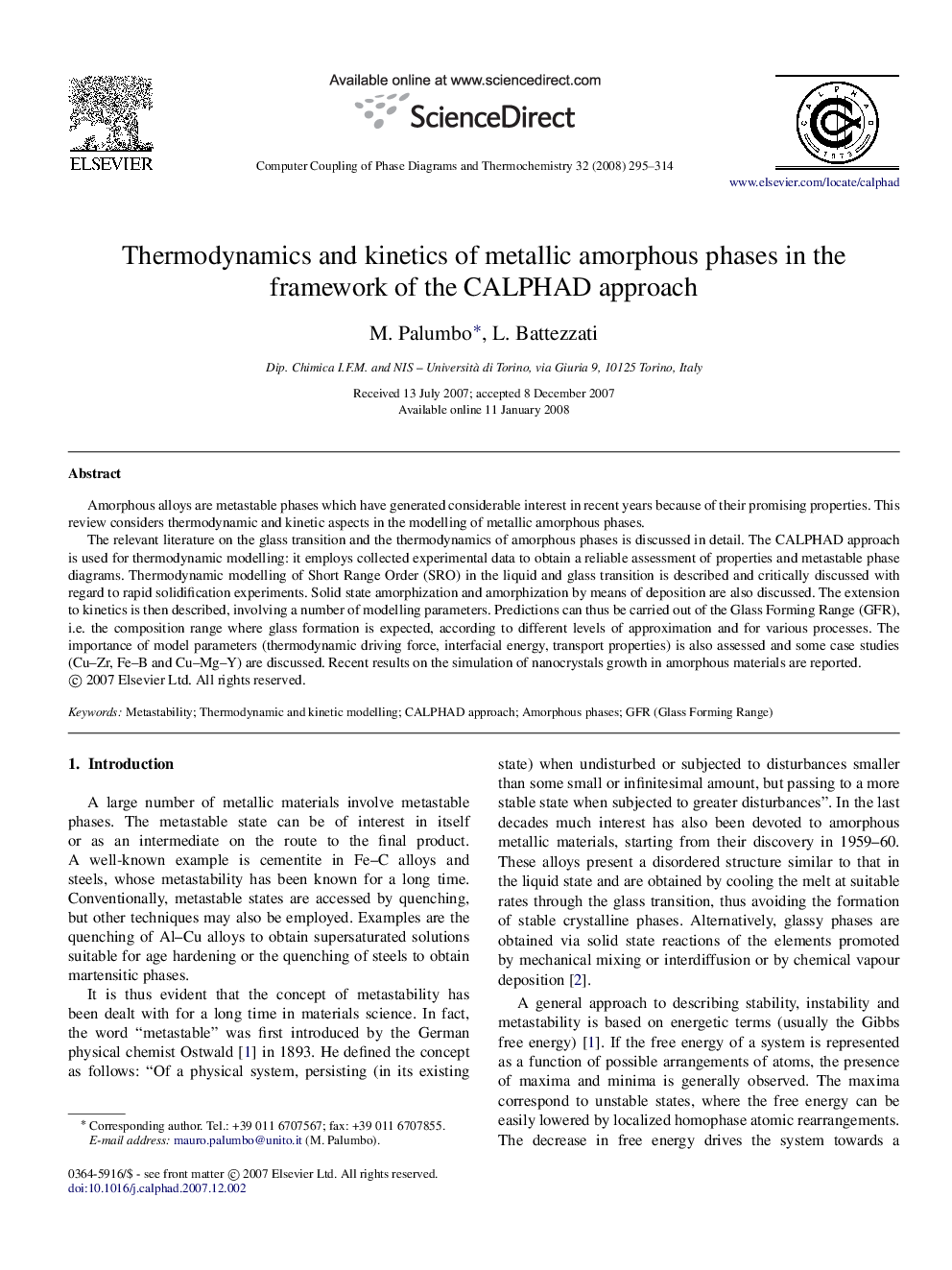| Article ID | Journal | Published Year | Pages | File Type |
|---|---|---|---|---|
| 1559242 | Calphad | 2008 | 20 Pages |
Abstract
The relevant literature on the glass transition and the thermodynamics of amorphous phases is discussed in detail. The CALPHAD approach is used for thermodynamic modelling: it employs collected experimental data to obtain a reliable assessment of properties and metastable phase diagrams. Thermodynamic modelling of Short Range Order (SRO) in the liquid and glass transition is described and critically discussed with regard to rapid solidification experiments. Solid state amorphization and amorphization by means of deposition are also discussed. The extension to kinetics is then described, involving a number of modelling parameters. Predictions can thus be carried out of the Glass Forming Range (GFR), i.e. the composition range where glass formation is expected, according to different levels of approximation and for various processes. The importance of model parameters (thermodynamic driving force, interfacial energy, transport properties) is also assessed and some case studies (Cu-Zr, Fe-B and Cu-Mg-Y) are discussed. Recent results on the simulation of nanocrystals growth in amorphous materials are reported.
Related Topics
Physical Sciences and Engineering
Materials Science
Materials Science (General)
Authors
M. Palumbo, L. Battezzati,
